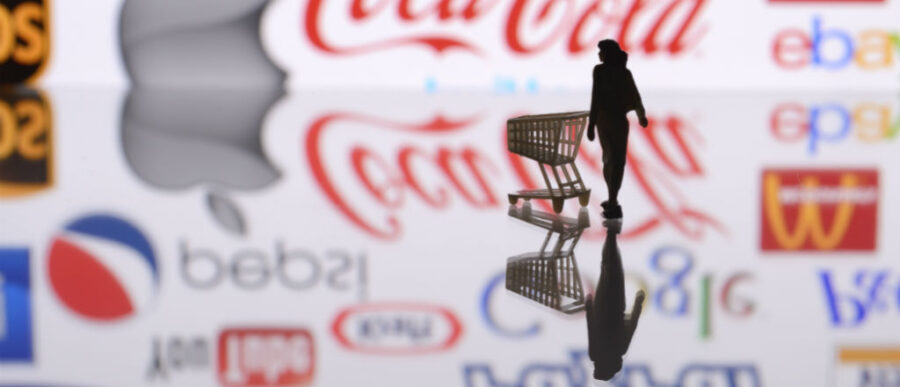Zora Fabiana Reed, who will be four years old in December, connects strongly with the Disney brand. When she was two years old, she preferred Disney’s Minnie Mouse diapers. That was no surprised to Zora’s dad, otherwise known as Wharton marketing professor Americus Reed.
“Research shows that children become very aware of brands at a very early age and start forming their preferences for brands at a very early age,” Reed noted. “The child will begin to influence the parent in terms of purchases.”
Consumers use brands as a platform for self-expression, which means they can be a company’s or product’s best advocate, but also be badly let down when they feel that the firm has broken a promise, Reed said during an interview on the Knowledge at Wharton show on Wharton Business Radio on SiriusXM channel 111. (Listen to the podcast at the top of this page.)
“The entire infant industry is based on fear,” he noted, adding that Disney is “a great example” of a brand that understands its market. “You are going to buy the most expensive stroller [and] you want the best diapers. You are learning how to be a good parent, especially when you have your first child.”
“Children become very aware of brands at a very early age and start forming their preferences for brands at a very early age.”
Thinking Differently
According to Reed, the millennial generation (which runs roughly from the early 1980s to the early 2000s) thinks differently about brands than its Generation X predecessors (people born between the 1960s and the 1980s) and the Baby Boomers before them. “Millennials tend to be very socially aware, are prone to be more public about it, and they are simply more thoughtful and forward looking about, ‘Why am I here? What am I going to leave behind? How am I going to change the world?'” said Reed. “All of these lofty things were in the minds of other generations, but not at the center to the extent that they are for millennials.” That explains the heightened awareness of environmentally friendly products among millennials, he added.
Reed also noted that earlier generations felt there was “a conflict between doing good and making money,” but that is not the case with millennials. also to pursue business-related activities and profits.”
That change in mindset among millennials may allow brands more latitude in pricing than they once had, but today’s consumers are not exactly easy prey either. “It is a double-edged sword but it can work in your favor,” said Reed. “If you are really able to make that deep connection, then you are able to create something called ‘identity loyalty,’ which really means that the brand will become part of who a person is, no matter what the product.”
Reed likened that identity loyalty to a “surplus in the bank” for companies, as customers see an alignment of their values with that of the brand. “That surplus can carry you through some tough times when there are product mistakes or defects,” he said. “Apple is a good example of this. When things go wrong, say, the [phone’s] antenna is not working or the phone is bending in your pocket, Apple loyalists will vehemently get on the [Internet] and defend, defend, defend….”
The Cost of Failed Promises
But those same consumers could be unforgiving if a brand lets them down. Reed said the U.S. auto industry is a telling example of that sentiment, “because there is a drive to want to connect on those values that are rich in American tradition and history, and those sorts of things are a very big part of self-expression.” He noted that the top U.S. auto brands failed to meet customer expectations on quality. “If the product is not delivering on those features, it makes it much more difficult to create and maintain that kind of relationship with those brands.”
“Millennials tend to be very socially aware, are prone to be more public about it and they are simply more thoughtful and forward looking about, ‘Why am I here? What am I going to leave behind? How am I going to change the world?'”
Authenticity is critical for brands to retain consumer loyalties, said Reed. As a brand attempts to connect with the consumer as a particular type of person, “then that message has to be consistent at all touch points where the consumer interfaces or comes into contact” with the company or its products.
Reed cited the Lululemon as a recent example of how “inconsistency of the message” can backfire. In March 2013, the athletic apparel company had to recall its high-end yoga pants after customers complained that they were too sheer, followed by other complaints that they pill and shred too soon.
Lululemon paid dearly for that debacle. Apart from the financial cost the recalls entailed, rivals like Under Armour and Gap-owned Athleta capitalized on its woes, and tried to lure away customers. At last week’s close of trading, the Lululemon stock was at $42, or about half the level it was at in June 2013. Its market cap fell from $12 billion to about $6 billion during that same period.
“[Lululemon] had some major challenges trying to portray its brand for a particular group of … people that are into yoga … and a lifestyle that is rooted in those values,” said Reed. “Consumers are looking for that authenticity.” But the recalls indicated that the firm wasn’t following through on the message, that it was merely “a kind of gimmick in which [the firm is] basically just trying to get money from [the consumer].”
Social Media and Brand Building
Thanks to social media, consumers are now “heavily involved” in the process of creating brands, Reed noted. “The proliferation of social media allows consumers to be active community advocates — they’re putting [out] the message, defending the message, advocating for the message, and becoming literally one-man marketing machines on behalf of the brands. Their voice is now much more heard. It’s a much more powerful context in terms of creating this connection, and companies know they have to pay attention.”
Creating such connections is especially important for new relationships between customers and brands. “You go through a courting phase, if you will, [and] a honeymoon phase,” said Reed. Here, the brands must demonstrate being aligned with customers’ values. Customers might ask themselves if, by using a certain brand, they can communicate who they are and differentiate themselves from others who don’t use that brand, he added.



